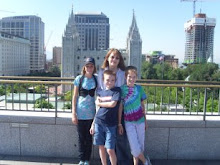I'm five hours away from being finished with the semester! Woo Hoo!
Check out this blog of a friend of a friend who is a first grade teacher in SLC: http://kristisorenson.blogspot.com/. Her stories of her students are hysterical.
Lie Pie and other Lessons
-
Most Sundays, growing up, we had a big Sunday dinner. After cleaning up
my parents would usually take a nap and the kids would do whatever it was
we did ...
11 years ago







